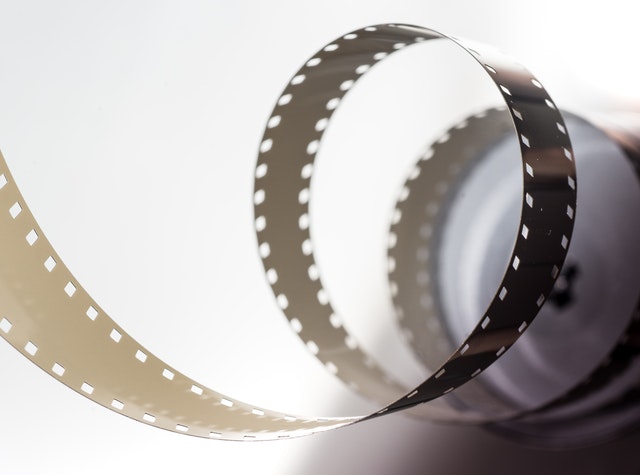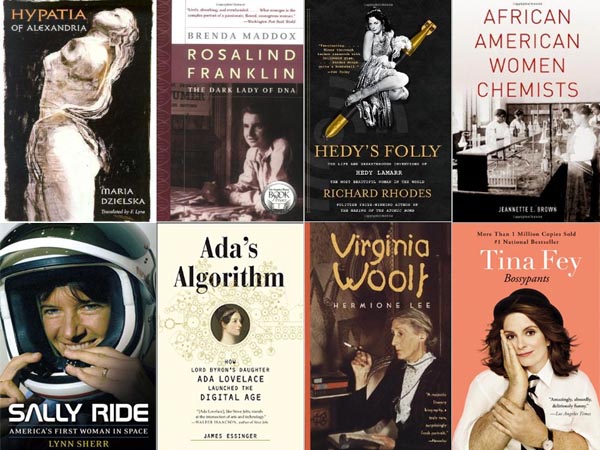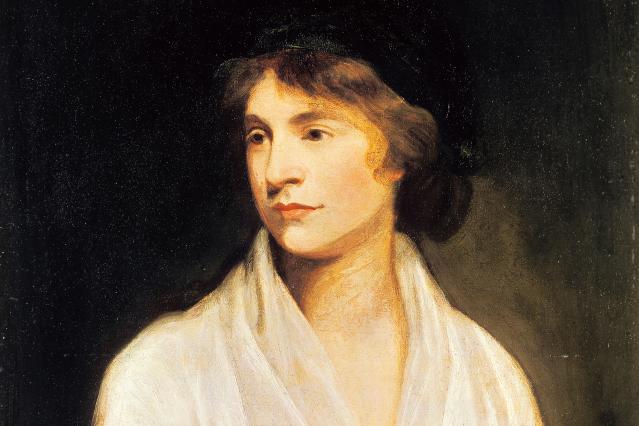Noteworthy Women In Sci-Fi History
It's Women's History Month, and we're all about celebrating ladies—especially ladies in the sci-fi world.
Myrtle “Morojo” Douglas, the first cosplayer
1939 was a big year for sci-fi fandom. For starters, it was the year of the first ever World Science Fiction Convention, (WorldCon). But more than that, it saw the very first instance of cosplay: Morojo and her boyfriend Forrest Ackerman came to Worldcon decked out in "futuristicostumes” based off of 1936 H.G. Wells movie Things to Come. Ackerman is often credited with being the first cosplayer—and he does look smashing in his sparkly cape—but Morojo designed and constructed both their costumes, and her ball gown transformed into a romper with a cape. Following Morojo’s example, Worldcon started having a costume contest the very next year, and other fan events followed suit. Morojo wasn’t just a cosplay trend-setter, though, she was deeply involved in the science fiction community, publishing countless zines of stories and criticism.
Verity Lambert was the youngest and only female producer at the BBC when she was offered an educational program about a time-traveling old man in a police box. Lambert took the idea and ran with it, pushing the fantasy elements of the show. While her superiors shook their heads and frowned about the inclusion of the villainous Daleks, Lambert fought for them. After the Daleks became a hit, Lambert was given free rein of the show.
While the DOCTOR WHO theme was written by Ron Grainer, it was Delia Derbyshire who gave it that haunting sound. She created the distinctive them by splicing and altering recordings of a single plucked string, filtered white noise, and harmonic waveforms of test-tone oscillators, designed for calibrating equipment and rooms. Derbyshire then took those bits and pieces, changed the tempo of some, the pitch of others and brought together something so unique and memorable, Grainer himself didn’t recognize it.
Devra Langsam and Sherna Comerford, editors of Spockanalia, which created “fanfiction” as we know it today, including slash fic
Spockanalia was a STAR TREK-focused fanzine that ran from September 1967 to 1970. Originally intended to be a one-off by its editors Devra Langsam and Sherna Comerford, Spockanalia’s combination of fan-ruminations on Vulcan culture and unauthorized fiction of the crew of the Enterprise proved irresistible. Spockanalia was the first time fan-fiction had a platform and a wide audience—Gene Roddenberry, the creator of STAR TREK, considered the zine required reading for his staff, and would hand out copies as soon as they arrived.
One thing that set Spockanalia apart from other fanzines was its interest in the sexual habits of the characters. Spockanalia published a fan-written novel placing Kirk and Spock in a romantic relationship. The “slash” designation, as in “Kirk/Spock,” has become a commonplace shorthand in fanfiction circles to designate which characters are erotically engaged within.
Octavia Butler, the fan who made good
Octavia Butler devoured science fiction as a child in the 1950s, reading stories from as Amazing Stories, Galaxy Science Fiction, and The Magazine of Fantasy & Science Fiction. Inspired by the…mixed bag of quality of sci-fi at the time (a viewing of “Devil Girl From Mars” convinced a 12-year-old Butler that she could write better stories) Butler went on to write some of the most original and insightful science fiction the genre has ever seen. In addition to winning accolades and awards within the sci-fi community, Butler was also the first sci-fi writer to win a MacArthur fellowship, aka the “Genius Grant.”
Marcia Lucas, the heart of STAR WARS
Marcia Lucas was already a sought-after editor before she married George Lucas, creator of STAR WARS. Her snappy editing style is all over the film, keeping the story moving at sharp pace from the get-go. But her contributions also gave the film it’s most memorable moments. It was Marcia’s idea to kill off Obi-Wan Kenobi to give the film a dramatic heft. She also came up with the “for luck,” kiss Leia gives Luke—which George wanted to cut. But perhaps her biggest contribution is the final trench battle, where Marcia completely re-ordered George’s shots to keep up the dramatic tension.
Ora Nichols, the sound of THE WAR OF THE WORLDS
Ora Nichols was the first woman to run a radio sound effects department during the Golden Age of radio. Nichols and her husband Arthur Nichols are credited with bringing the concept of sound effects to radio. She worked frequently with Orson Welles, including the famous 1938 THE WAR OF THE WORLDS broadcast. That radio show spooked listeners all over America, who thought alien invasion really was happening. Part of what makes the show so convincing was Nichols’s realistic sound effects, a discipline she invented as she went along. Nichol’s used air conditioners to stand in for jet engines and the turn of cast iron lid for the opening of alien space craft, creating a believable soundscape that terrified millions.

Jadzia Axelrod
Jadzia Axelrod is an author, an illustrator, and a world changer. Throughout her eventful life she has also been a circus performer, a puppeteer, a graphic designer, a sculptor, a costume designer, a podcaster and quite a few other things that she’s lost track of but will no doubt remember when the situation calls for it.She is the writer and producer of “The Voice Of Free Planet X” podcast, were she interviews stranded time-travelers, low-rent superheroes, unrepentant monsters and other such creature of sci-fi and fantasy, as well as the podcasts “Aliens You Will Meet” and “Fables Of The Flying City.” The story started in “Fables Of The Flying City” is concluded in The Battle Of Blood & Ink, a graphic novel published by Tor.She is not domestic, she is a luxury, and in that sense, necessary.




